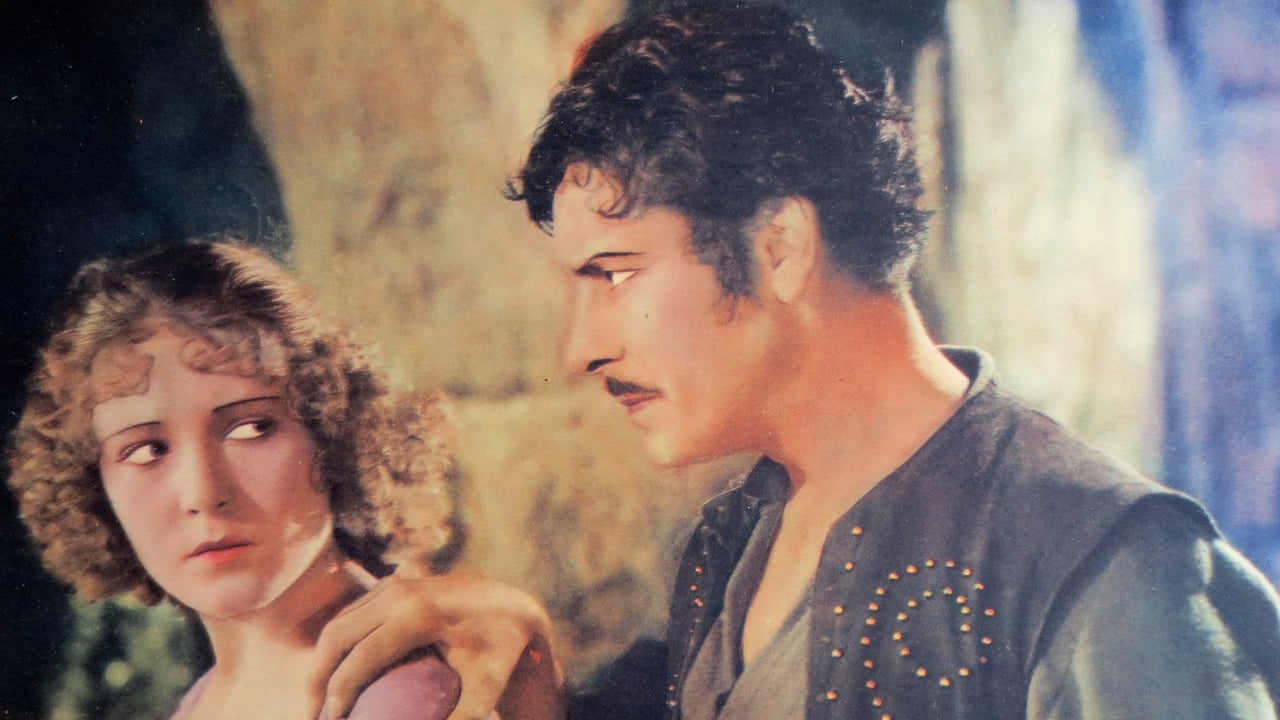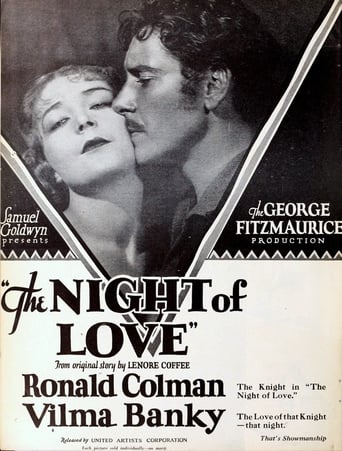

As they say, they don't make 'em like this anymore. All the more reason is enjoy this visually sumptuous production. You've presumably read the story outline from the previous reviews so I'll skip a repeat of a plot description here.While the story is over-the-top and doesn't hold any real surprises, this handsomely produced Samuel Goldwyn silent is a treat for the eye, with wonderful costumes and sets and, at times, luminous photography, with some breath taking close ups of its two stars (a dashing curly haired Ronald Colman as a gypsy bent on revenge and the lovely Vilma Banky as a French princess that he takes prisoner).Released in January, 1927, this film was shot the previous year, with director George Fitzmaurice in wonderful control. This was just after he had just finished filming the similarly entertaining (though somewhat more tongue-in-cheek) Son of the Sheik, a film with the same leading lady, as well as in-your-face villain (a smirking Montagu Love).Miss Banky, whose thick Hungarian accent would be the death of her film career with the arrival of the talkies, has genuine chemistry with Colman, just as she had had with Valentino. (This would be one of five films in which Banky and Colman would be co-starred).There's an orgy of sorts (well, at least a lot of dancing girls in skimpy attire running around) in villain Love's castle, as well as an exciting attempt to rescue a damsel held in a castle dungeon. And, for once, it's the quick thinking of the leading lady that saves the day and brings the film to its final happy resolution.The print that I saw had a lovely golden tint, adding even more to the visual glories of this, unfortunately, exceedingly difficult film to find.
... View MoreWhile The Night of Love (1927) is no lost masterwork, it is a beautifully shot period romance, with all the swashbuckling and sensual delights you could ever want from a production like this.While the plot was praised as original by critics in 1927, it will come across as more or less familiar to a modern crowd. After his bride is kidnapped by a local duke to be ravished and then kills herself to protect her virtue, the young Romani Montero is outraged and becomes a Robvin Hood figure. Swearing vengeance upon the duke, Montero kidnaps his bride, Princess Marie, before their marriage can be consummated. As these things usually go, the two fall in love and the duke is ready to exact his own counterattack for his humiliation.Ronald Colman flourished in talkies due to his velvet voice, but in TNOL, he projects a different image. I was skeptical as to whether or not he would pull off playing a lusty bandit, but he is excellent. While the delicate Vilma Banky is mostly known as Rudolph Valentino's leading lady in The Eagle (1925) and Fitzmaurice's other romantic-adventure The Son of the Sheik (1926), she was also paired with Ronald Colman quite a bit. The two have fabulous chemistry, erotic and sweet. Montagu Love will no doubt be familiar to silent film buffs, being one of the go-to character actors for villainous roles. He leers and hisses with the best of them.The sets and costumes are gorgeous. The cinematography just gleams, so beautiful in black and white. George Fitzmaurice was certainly one of the most visually sumptuous directors in Hollywood at the time.A pretty and entertaining movie. Warner Archive needs to release it on DVD.
... View MoreExcellent romantic drama starring Ronald Colman and Vilma Banky as star-crossed lovers. He's a gypsy and she's a princess. Their paths cross when an evil Duke (Montagu Love) uses his "privilege" of a night of love with new brides. He takes Colman's gypsy bride but she kills herself rather than submit. Later, when the princess arrives to marry the Duke, she's abducted by Colman as revenge his his bride's death. They are finally captured by the Duke and his army but just as Colman is about to be burned at the stake a miracle happens. Beautifully done with breathtaking close-ups of the stars.Others in the cast include Sally Rand as the gypsy dancer, Natalie Kingston as the evil Beatriz, and John George as the jester.Banky was discovered by Sam Goldwyn and nicknamed the Hungarian Rhapsody for American films. She was a hit in her first Hollywood, THE DARK ANGEL. Of Banky's 28 films, only 8 survive in complete form or in fragments. Colman, of course, was a major actor in silents and moved easily into talkies.
... View More